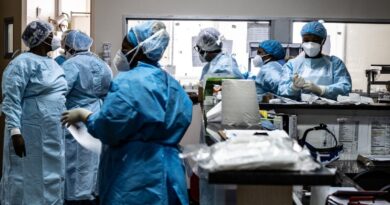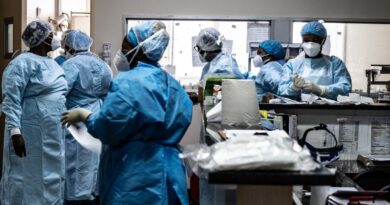Tobacco a double-edged sword for Hurungwe…STI & HIV cases increasing during harvesting season
HURUNGWE, Zimbabwe’s largest tobacco-producing district, is experiencing a period of growth and potential.
With plans by Karoi Town Council, the district’s capital, to allocate land to stakeholders in tobacco value addition, there is hope that Hurungwe will emerge as a thriving industrial hub for tobacco farming.
The district proudly contributes around 33 percent of the nation’s total yield, reflecting the hard work and dedication of local farmers.
However, amidst these economic successes lies a complex and troubling public health reality. The tobacco industry, while a source of livelihood, has been linked to a concerning rise in HIV and other sexually transmitted infections.
This connection is starkly illustrated in Hurungwe District.
According to a 2023 report from the National Aids Council (NAC), Hurungwe has the highest number of people living with HIV in the province, with over 29 000 individuals affected.
The peak tobacco sale season in Karoi attracts a large influx of people seeking temporary employment. Unfortunately, this migration also brings significant social challenges, including a rise in sex work that targets vulnerable young men.
The season’s bustling atmosphere is often enlivened by prominent musicians, providing entertainment and a brief escape for workers.
However, this environment can also foster risky behaviour, leading to unprotected encounters among the youth.
The NAC is determined in its mission to create a Zimbabwe free from HIV infections, stigma and AIDS-related deaths by 2030. It is committed to coordinating a national, multi-sectoral response to this health crisis.
NAC’s Hurungwe District Aids and Action Coordinator (DAAC), Ms Tafadzwa Rusike, highlights the health risks posed by tobacco culture in the area.
She noted that the influx of female sex workers during the peak tobacco season had an impact on social health.
“This brings a variety of social challenges and is a key driver of HIV transmission,” she said during a media tour organised by NAC recently.
Ms Rusike acknowledges that other factors, such as artisanal mining and the district’s proximity to the Harare-Chirundu trunk route, also play significant roles in the rise of HIV-related cases.
To combat the epidemic and support the community, the district is implementing various proactive models, including the Sista2Sista and the Behaviour Change Community Motivators Model (BCCM).
These grassroots initiatives aim to provide vital information on sexual and reproductive health while ensuring that vulnerable youths have access to essential HIV services.
Among these change-makers are 16 Sista2Sista mentors, including Ms Enia Chakamanga, who has dedicated over a decade to empowering young girls in the fight against HIV.
She has impacted the lives of more than 700 females aged 13 to 24, helping them navigate the challenges they face during the busy tobacco sales season.
“Our community faces significant challenges during these times. Many local business owners hire sex workers from urban areas, which can put our youth at risk,” said Ms Chakamanga, emphasising the critical importance of educating young men and women about the necessity of using condoms and getting tested for HIV.
At Chinhere Clinic, Mr Tinos Chimutashu, another mentor under the BCCM initiative, works with young men to impart the same important messages.
He has observed a positive trend, indicating a decrease in reported STI and HIV cases in the area.
Through these initiatives, compassionate individuals like Ms Chakamanga and Mr Chimutashu are working tirelessly to strengthen their community’s awareness and resilience against the challenges posed by tobacco culture, fostering a healthier future for all.
Some 20 kilometres east of Chinhere Clinic, there is Mr Tendai Mundondwa, another (BCCM) mentor, who is helping at least 30 teenagers and youths from Tengwe under Ward 2 of the same district.
A group of men convenes every Monday to Friday to conduct soccer sessions in a way that has drawn them away from drugs and premature sex.
Tengwe, like any other place in Hurungwe, is a hub of tobacco production and is not insulated from the scourge.
A beneficiary from Tengwe, Kudakwashe Madyaura, said before engaging in sporting activities, most youths were involved in drug abuse and sex, which saw many boys contracting STIs.
“We have seen a decrease in STIs, and most boys and youths are now focused on life more. We are grateful for the soccer sessions that we are now having,” he said.
In addition to the various models in place, the province has achieved 100 per cent service delivery at all the health centres.
NAC provincial manager, Mr David Nyamurera said the HIV incidence for the province has been declining over the years.
There has been a notable decrease from 1,32 per 1 000 in 2018 to 0,71 per 1 000 in 2023, and an increase from 0,69 in 2022.
In 2023, HIV incidence was higher in Mhondoro, followed by Chegutu, Hurungwe, Makonde and Zvimba, while Kariba had the lowest incidence.
Herald live




